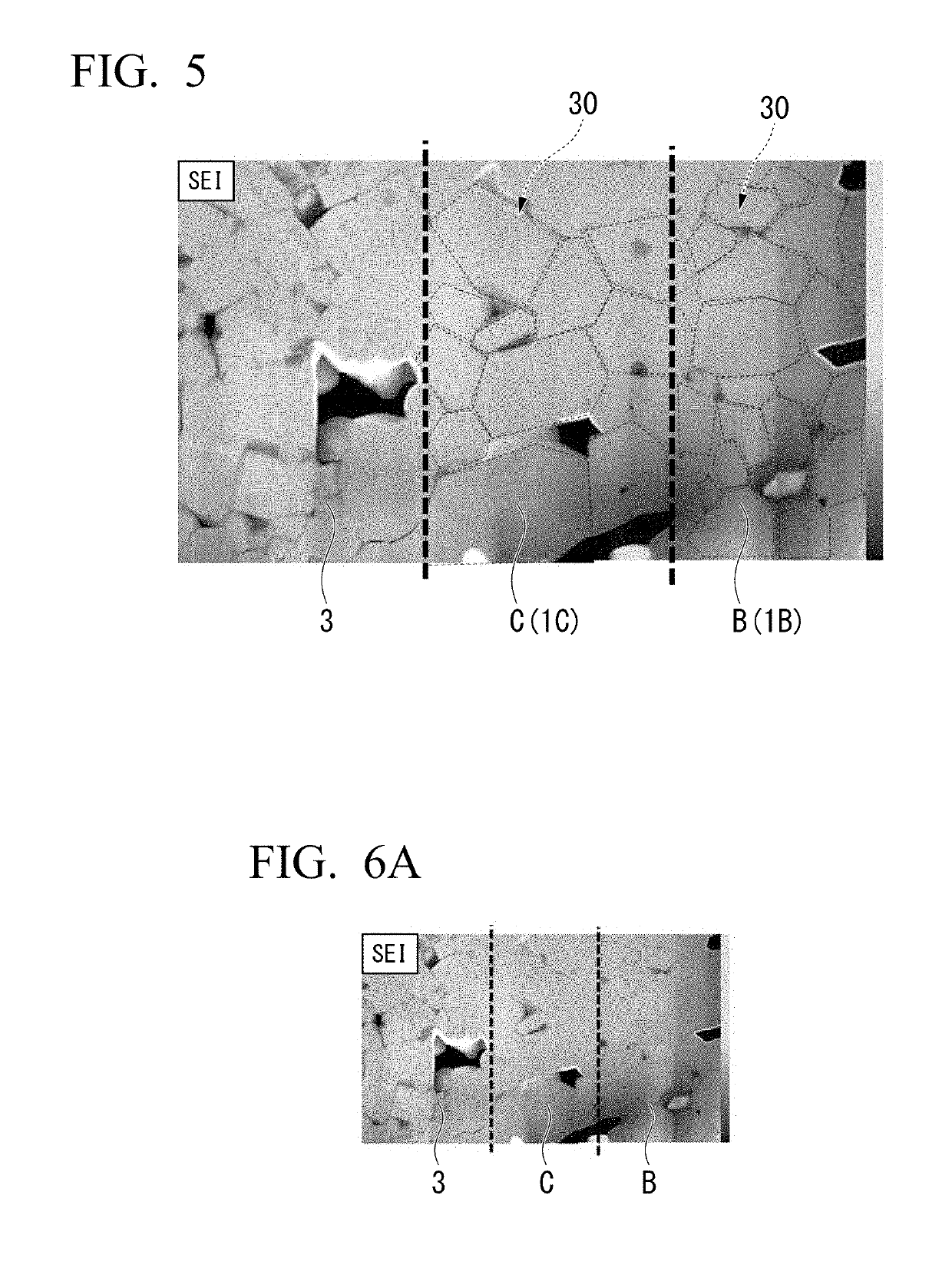All-solid lithium ion secondary battery
a all-solid technology, applied in the manufacture of final products, cell components, electrochemical generators, etc., can solve the problems of all-solid lithium ion secondary battery and smaller output than it, and achieve the effect of reducing internal resistance and large battery capacity
- Summary
- Abstract
- Description
- Claims
- Application Information
AI Technical Summary
Benefits of technology
Problems solved by technology
Method used
Image
Examples
example 1
[0124]An active material was prepared by a solid phase reaction method. First, as a substance serving as the foundation of the active material, Li2CO3, Al2O3, V2O5, TiO2, and NH4H2PO4 were prepared. These were wet-mixed in a ball mill for 16 hours. Water in a sample after the wet-mixing was removed, the sample was dried, and the sample was calcined at 800° C. for 2 hours in air. Moreover, the calcined product was subjected to milling using a ball mill for 16 hours, water in the calcined product was removed, and the calcined product was dried. The obtained powder was fired at 800° C. for 2 hours under a mixed gas atmosphere of nitrogen and 3% hydrogen to obtain an active material having a core region and a shell region.
[0125]The obtained active material was made into a paste to prepare a green sheet made of a negative electrode active material and a positive electrode active material. Furthermore, similarly, substances of the foundations of an intermediate layer, a current collector,...
example 2
[0152]Example 2 and Example 1 differ in that, in an all-solid lithium ion secondary battery in Example 2, a composition of an intermediate layer was changed. The other points were the same as in Example 1.
[0153]As a result, a constitution of each layer of the all-solid lithium ion secondary battery in Example 2 was as follows.
[0154]Positive electrode current collector and negative electrode current collector: Mixture of Cu and the following active material
[0155]Positive electrode active-material layer and negative electrode active-material layer
[0156]Core region: Li0.5V1.9Al0.03Ti0.55P3.1O12-x
[0157]Shell region: Li0.52V1.2Al0.06Ti1.0P3.12O12-x
[0158]Solid electrolyte: Li0.6V0.05Al0.2Ti1.75P3.2O12-x
[0159]Intermediate layer: Li0.55V1.0Al0.07Ti1.15P3.15O12-x
[0160]A battery capacity of the all-solid lithium ion secondary battery in Example 2 was 108.6 μAh and an internal resistance thereof was 0.58 kΩ.
[0161]The above-described results are summarized in Table 1 below.
TABLE 1Particle s...
examples 3 to 7
[0162]Examples 3 to 7 and Example 1 differ in that, in Examples 3 to 7, thicknesses of green sheets for obtaining intermediate layers are increased and the thicknesses of the obtained intermediate layers are changed. Other conditions were the same as in Example 1.
[0163]The measurement results of Examples 3 to 7 are summarized in Table 2 below.
TABLE 2Thickness ofIntermediate layerBattery capacityInternal resistance(μm)(μAh)(kΩ)Example 30.2101.21.12Example 40.5103.30.51Example 51108.10.42Example 65106.60.45Example 71394.322.10
[0164]Since the thicknesses of the intermediate layers was not too thick when the thicknesses of the intermediate layers were in a range of 0.5 μm to 5 μm, a significant reduction in battery capacity was not observed. Furthermore, since the thicknesses of the intermediate layers are sufficient, the adhesion between the solid electrolyte and an active-material layer enhanced and the internal resistance thereof was sufficiently small.
PUM
| Property | Measurement | Unit |
|---|---|---|
| thickness | aaaaa | aaaaa |
| thickness | aaaaa | aaaaa |
| temperature | aaaaa | aaaaa |
Abstract
Description
Claims
Application Information
 Login to View More
Login to View More - R&D
- Intellectual Property
- Life Sciences
- Materials
- Tech Scout
- Unparalleled Data Quality
- Higher Quality Content
- 60% Fewer Hallucinations
Browse by: Latest US Patents, China's latest patents, Technical Efficacy Thesaurus, Application Domain, Technology Topic, Popular Technical Reports.
© 2025 PatSnap. All rights reserved.Legal|Privacy policy|Modern Slavery Act Transparency Statement|Sitemap|About US| Contact US: help@patsnap.com



